In the past, Gdansk was one of the richest cities on the Baltic coast due to its active maritime trade. In memory of that era, magnificent merchant houses that belonged to influential guilds have been preserved in the historical center. Their luxurious facades have been decorating city streets for more than one century.
In Gdansk, every tourist will find something to their liking. In summer, a rich excursion program can be diluted with a rest on the city beach, because even the harsh Baltic Sea sometimes gives people several days of sunny weather. The Catholic churches of Gdansk are classic examples of medieval Gothic, and the city's mansions and many administrative buildings are works of art in the Renaissance and Baroque styles.
What to see and where to go in Gdansk?
The most interesting and beautiful places for walking. Photos and a short description.
- Royal tract
- Fountain of Neptune
- Artus Court
- Main City Hall
- Mariatskaya street
- Abbey Palace in Oliva
- Oliva Cathedral
- Church of St. Mary
- Church of St. Nicholas
- Golden Gate
- Green gate
- Big arsenal
- Big mill
- Prison tower
- Crane on Motlaw
- European Solidarity Center
- National Museum of Gdansk
- World War II Museum
- Westerplatte
- Weikselmünde
- Gdansk railway station
- PGE Arena
- Zoo Gdansk
- Ferris wheel
- Jelitkovo beach
royal tract
The road of Polish kings begins at three city gates - Golden, Villainous and High. It runs along Dluga Street and leads to Dlugi Targ Square past the elegant facades of city houses. Along the Royal Route there are many buildings that are real architectural masterpieces. Today, the royal path has become the most popular tourist route in Gdansk.

Address: Royal tract, Gdansk, Poland
Opening hours: 09:00 - 18:00
Fountain of Neptune
The fountain is located on Dlugi Targ Square (translated from Polish, this name means "long market"). The sculptural composition is considered a symbol of Gdansk. It personifies the inextricable link between the city and the sea. The Flemish-style fountain was created by the sculptor A. van der Blok in the 17th century. Later, decorative elements were added to the sculpture - a figured lattice and a rococo bas-relief depicting sea monsters.
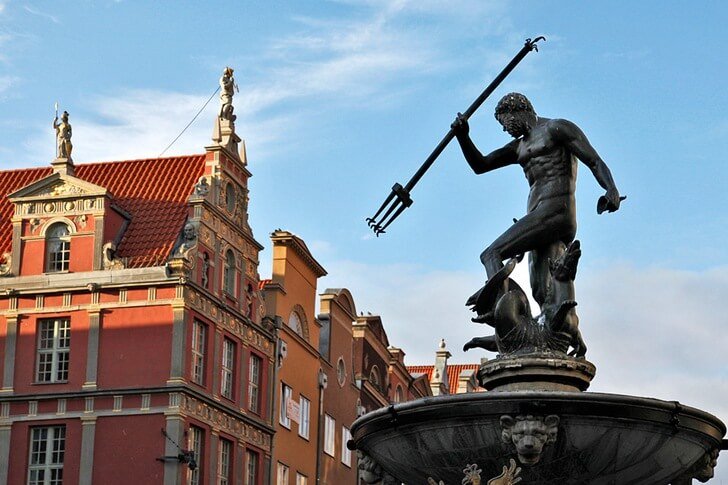
Address: Fountain of Neptune, Gdansk, Poland
Phone: +48 58 320 30 00
Opening hours: 00:00 - 23:59
Artus Court
The Artus Court is a complex of buildings on the square in front of the City Hall. The name of the place comes from the legend of King Arthur. In the Middle Ages and New Time, city authorities sat in the buildings of the Artus Court, merchants made their deals, eminent citizens held meetings. The complex was built in the XIV century. At the end of the 15th century, it burned down and was later rebuilt in the Gothic style.
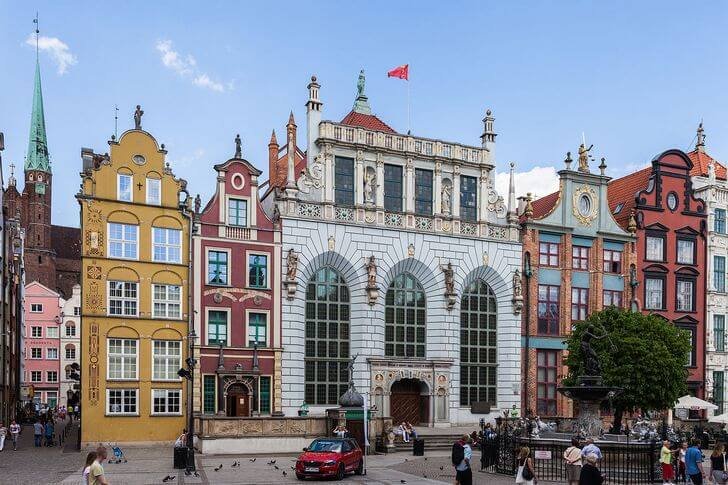
Address: Artus Court, Gdansk, Poland
Opening hours: Mon-Sun: 10:00-20:00
Main City Hall
The town hall was erected in the 15th century according to the project of G. Hezel. The first building was built in the Gothic style. After a fire in the middle of the 16th century, it acquired the features of mannerism. The town hall tower is crowned by the figure of King Sigismund II, created in 1561. The best masters of that time worked on the interior. The building houses the city museum with an interesting historical exposition.

Address: Main City Hall, Gdansk, Poland
Opening hours: Mon-Fri: 8:00-16:00
Mariatskaya street
A pedestrian street with a special atmosphere, which is considered one of the most picturesque corners of Gdansk. Wealthy citizens used to settle here, today workshops, souvenir shops, galleries and cafes are located in the former residential buildings. Unfortunately, most of the historical buildings of Mariacka Street were destroyed during World War II. Everything that a tourist sees today is the result of careful restoration.
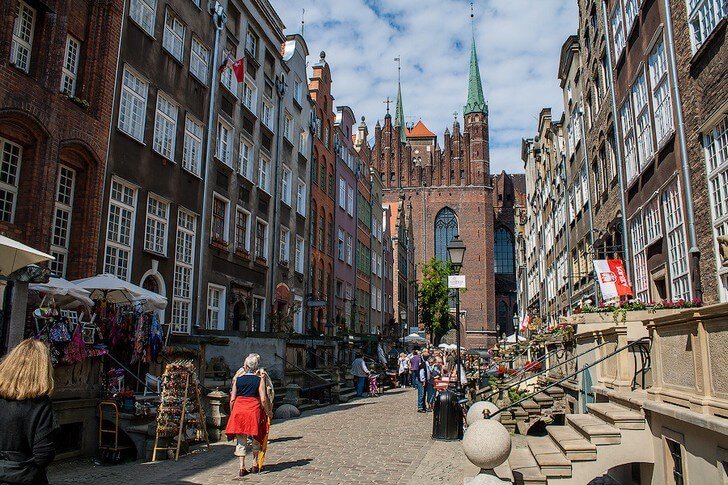
Address: Mariatskaya street, Gdansk, Poland
Opening hours: 08:00 - 22:00
Abbey Palace in Oliva
Rococo palace, rebuilt from a 15th-century Gothic castle at the expense of the abbot of the Cistercian monastery J. Rybinsky. After the partition of Poland in the 19th century, the building passed into the possession of the noble German Hohenzollern family. By the end of the century, it fell under the jurisdiction of the city authorities. In 1945 the palace burned down completely. Recovery took place in the 1960s. Today, one of the departments of the Pomeranian Museum is located there.

Address: Abbey Palace in Oliva, Gdansk, Poland
Opening hours: 10:00 - 18:00
Oliva Cathedral
The picturesque Catholic church of the XIV century, built in the Gothic style. It has impressive dimensions - two symmetrical towers reach a height of 46 meters, the length of the cathedral exceeds 100 meters. Inside there is a magnificent 18th century organ and 23 marble altarpieces created in the Rococo and Baroque styles. A museum has been opened at the temple, where works of church art of the XIV-XVI centuries are exhibited.
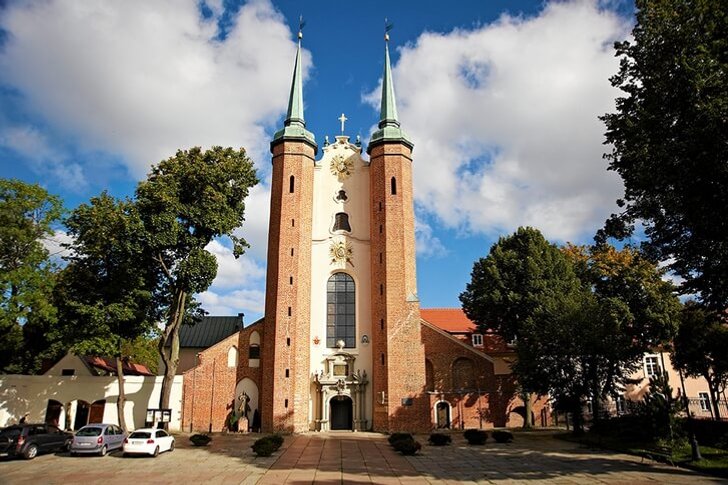
Address: Oliva Cathedral, Gdansk, Poland
Phone: +48 58 552 19 92
Opening hours: Mon-Sat: 10:00-18:00; Sun: 12:00-18:00
Church of St. Mary
The temple is the largest brick cathedral in Europe, built in the Gothic style. Its construction lasted 150 years and stretched over three centuries. The tower of the church reaches a height of more than 77 meters. The interior is decorated with baroque statues and a magnificent 16th-century altar by M. Schwartz. The attention of tourists is attracted by the astronomical clock fixed on the facade, created by G. Düringer in the 15th century.
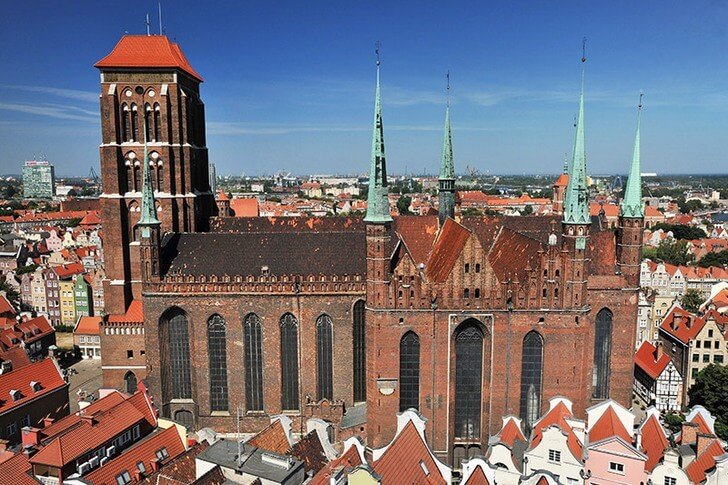
Address: Church of St. Mary, Gdansk, Poland
Phone: +48 58 301 13 12
Opening hours: 09:00 - 17:00
Church of St. Nicholas
St. Nicholas is the heavenly patron of sailors and fishermen. The temple in his honor is considered one of the oldest in Gdansk. In the 12th century it was built of wood, in the 13th century it was rebuilt from stone in the Gothic style. The interior of the church is made in a luxurious baroque style. The building was not damaged during the Second World War, so its historical appearance has survived to this day almost unchanged.

Address: Church of St. Nicholas, Gdansk, Poland
Opening hours: 9:00 - 18:00
Golden Gate
The Golden Gate is located on the street. Długa in the historic center of Gdansk. They were erected at the beginning of the 17th century instead of the old Gothic gates that were part of the city fortifications. The building was built in the style of Dutch mannerism according to the design of A. van der Block. In the 1940s, during the war, the construction was destroyed, like many other attractions. In 1957, it was restored to its original appearance.
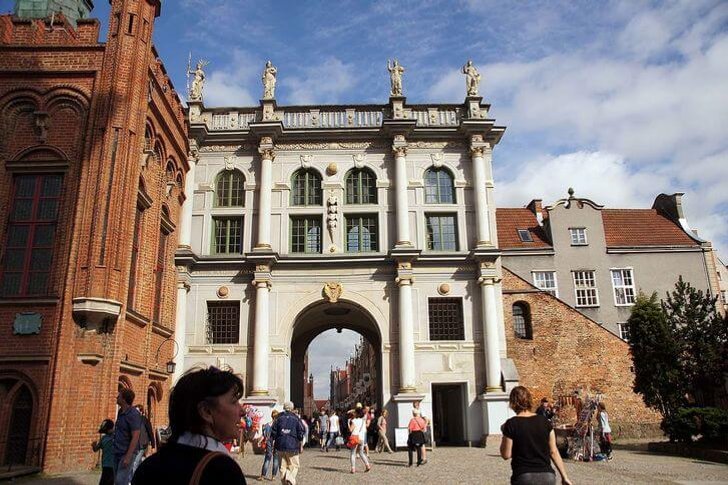
Address: Golden Gate, Gdansk, Poland
Opening hours: 09:00 - 20:00
green gate
The first mention of the Green Gate dates back to the middle of the 14th century. The brick construction in the style of Dutch mannerism was erected already in the 16th century according to the project of G. Kremer and R. Amsterdamsky. The gate was built as a royal residence, but the monarchs who arrived in Gdansk almost never stopped here. Since the 2000s, the building has housed a branch of the National Museum.
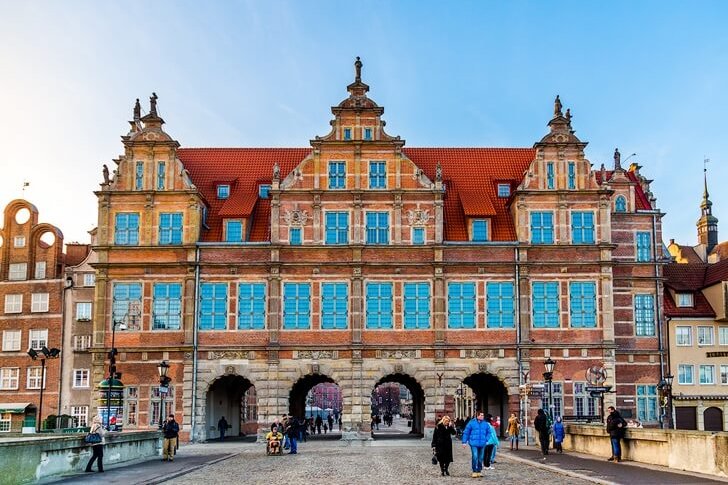
Address: Green gate, Gdansk, Poland
Opening hours: 09:00 - 19:00
Big arsenal
The impressive building of the Grand Arsenal was built in the Renaissance style according to the design of W. van der Meer and W. van der Block. It is an outstanding architectural monument of the early 17th century. Until the 19th century, the premises were used to store weapons and ammunition. Today, the Academy of Fine Arts is located on the second floor, the first is given over to a shopping center.

Address: Big arsenal, Gdansk, Poland
Opening hours: Mon-Sun: 10:00-18:00
big mill
The old mill was built in the XIV century by the knights of the Teutonic Order. At that time, it became the largest in Europe. Surprisingly, the structure was used for its intended purpose until the end of World War II until it was seriously damaged. It survived only one major modernization in the 1830s. After restoration, the mill continued to operate until the early 1990s. In 1993, it was converted into a shopping center.
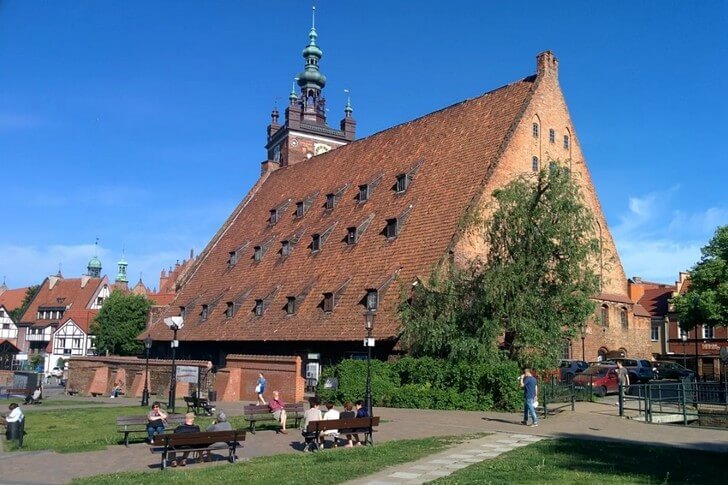
Address: Big mill, Gdansk, Poland
Opening hours: Mon-Sun: 10:00-20:00
prison tower
In the 14th century, the Prison Tower was part of the fortress wall. The structure underwent several reconstructions in the 15th and 16th centuries, as a result of which its appearance changed. The tower began to be used for torture and detention of prisoners from the beginning of the 17th century. A place for execution was organized nearby. Today, the building houses the Amber Museum, where icons, jewelry, figurines and other products made from this material are exhibited.
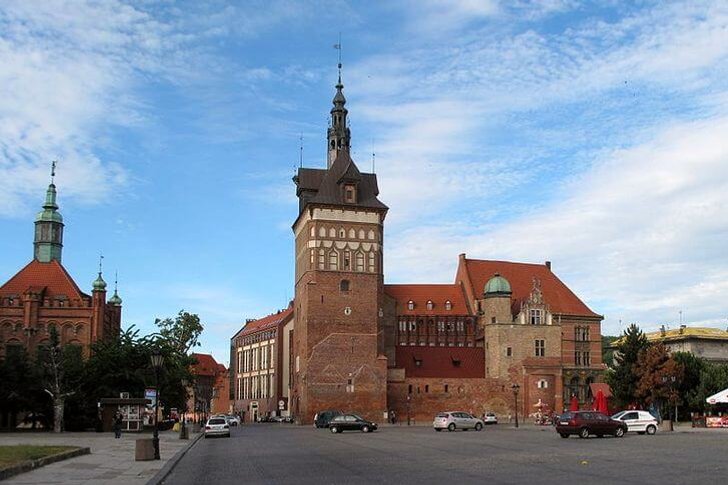
Address: Prison tower, Gdansk, Poland
Opening hours: Mon-Sun: 10:00-18:00
Crane on Motlaw
The Crane on Motława is a maritime museum housed in an original 14th-century building. Previously, it served as a crane for loading ships, and also served as a gate and defensive structure. The roof of the construction is crowned with a copper figurine of a crane, which gave its name to the whole complex. Today's building is a modern building from the 1960s. The medieval original was destroyed during the war.
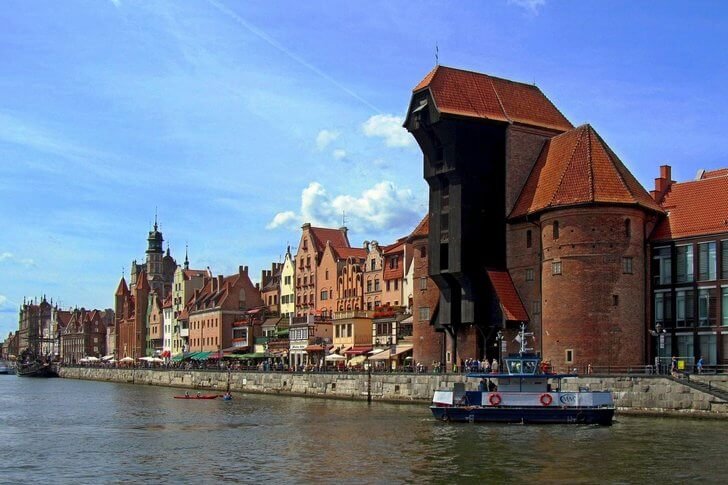
Address: Crane on Motlaw, Gdansk, Poland
Opening hours: Mon-Sun 12:00-22:00
European Solidarity Center
A museum complex that tells about the history of the legendary Solidarity movement. This association was formed as a trade union in the 1980s. Just a few days later, its members moved on to confrontation with the communist government of Poland. In a short time, about 80% of working citizens joined Solidarity. In fact, the European Solidarity Center is one of the "anti-Soviet" museums that exist in every country that was a member of the Warsaw Pact.
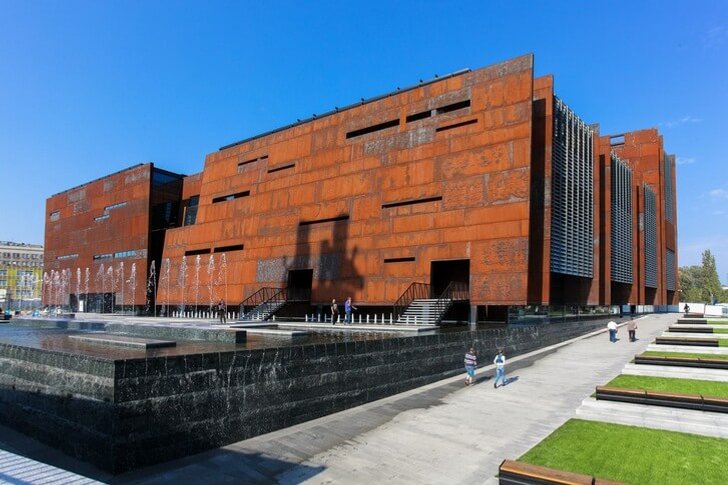
Address: European Solidarity Center, Gdansk, Poland
Phone: +48 58 776 40 00
Opening hours: 09:00 - 20:00
National Museum of Gdansk
The museum exposition is located in a building of the XV century, which once belonged to the Franciscan monastery. It consists of valuable collections of jewelry, paintings, sculptures and ceramics, created in the period from the 15th to the 20th century. One of the most valuable exhibits of the collection is G. Memling's painting The Last Judgment. There is also a large collection of paintings by the famous painter A. Möller.
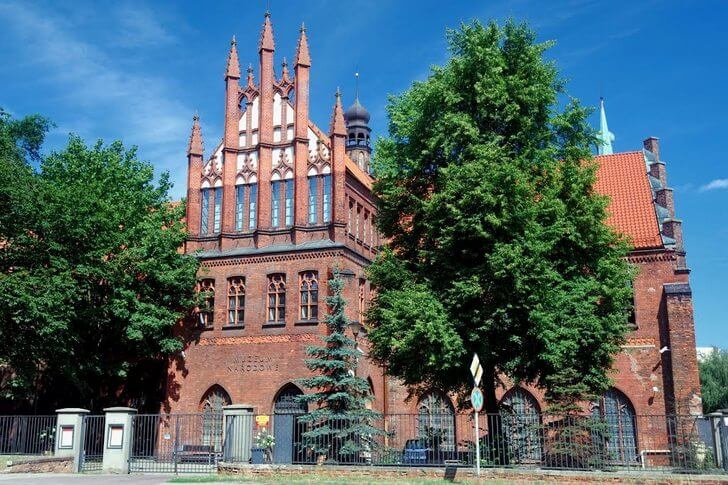
Address: National Museum of Gdansk, Gdansk, Poland
Phone: +48 58 305 51 00
Opening hours: 10:00 - 18:00
World War II Museum
The museum opened in March 2017 and immediately won the title of the largest in Poland. The main goal of its creators is to highlight the role of Poland in World War II, as well as to focus on the peculiarities of Polish history. The museum consists of three large blocks, divided into 18 themed halls. With the help of modern multimedia equipment, visitors can watch documentaries and archival footage.
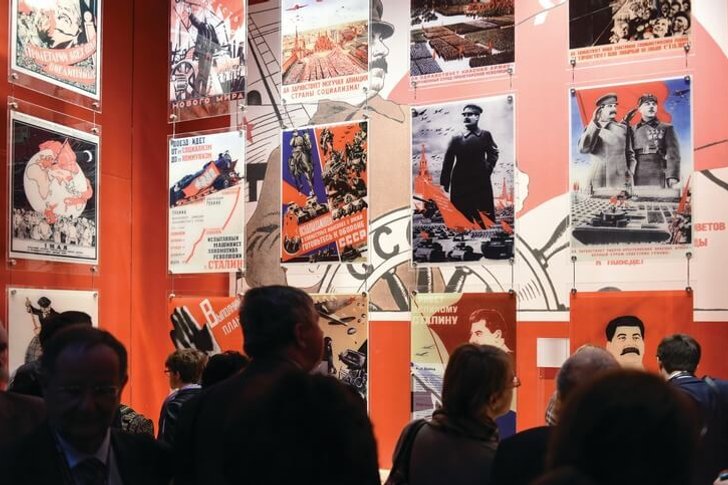
Address: World War II Museum, Gdansk, Poland
Phone: +48 58 355 51 00
Opening hours: 10:00 - 18:00
Westerplatte
Memorial complex on the peninsula of the same name. The Second World War began with the shelling of the armory, which had been located here since 1924. The Westerplatte garrison held out for seven days, after which it was taken by German troops. A monument was erected on the peninsula in memory of the heroic defenders of the warehouse. The ruins of the barracks and one of the guard posts have also been preserved there.
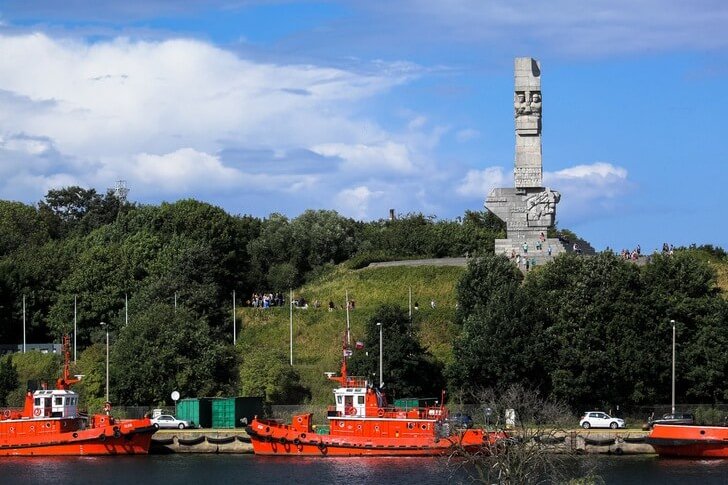
Address: Westerplatte, Gdansk, Poland
Opening hours: 08:00 - 20:00
Weikselmünde
Fortification of the 15th century in the Vistula riverbed, which was once part of the city's defensive system. Several architectural styles were mixed in the appearance of the fortress, as the building was repeatedly completed over several centuries. Until the middle of the 18th century, a lighthouse was located in the round central tower. Weikselmünde is recognized as an architectural monument of national importance.
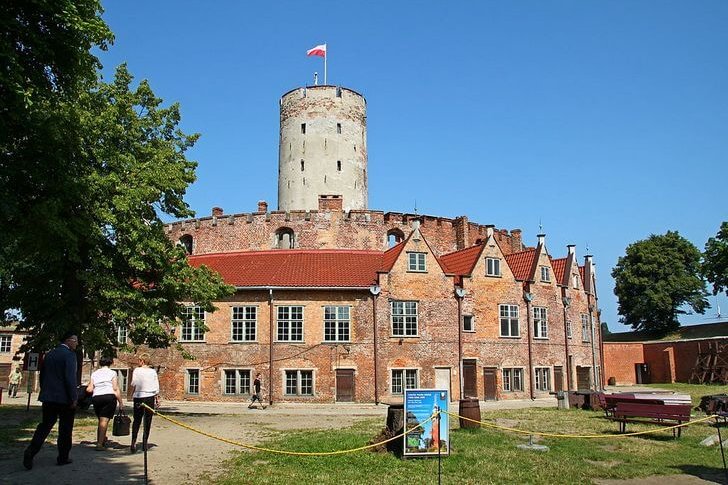
Address: Weikselmünde, Gdansk, Poland
Opening hours: 08:00 - 20:00
Gdansk railway station
A large passenger hub that serves many intercity destinations. The station is located in a picturesque Renaissance building built in the late 19th and early 20th centuries. The facade of the building is made of red brick, which gives it an elegant and festive look. A clock tower 50 meters high rises above the structure. Inside the station looks much more modest.
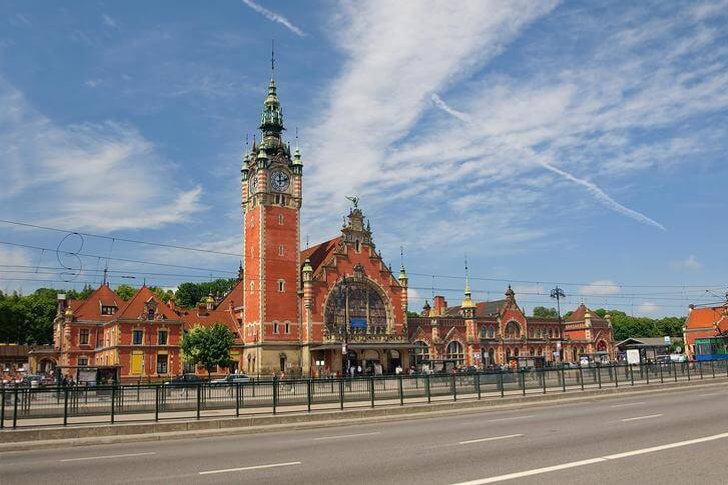
Address: Gdansk railway station, Gdansk, Poland
Phone: +48 58 320 20 00
Opening hours: 00:00 - 23:59
PGE Arena
Football stadium, designed for 44 thousand spectators. It hosted matches of the Euro 2012 Cup. The arena was built in 2011. In addition to football games, music concerts and festivals are held here, as the design of the stadium allows for events of various formats. Bands such as the Pet Shop Boys, Iron Maiden and Bon Jovi have performed here. Also, the arena hosted the performance of the circus "Du Soleil".

Address: PGE Arena, Gdansk, Poland
Phone: +48 58 769 21 00
Opening hours: 09:00 - 20:00
Zoo Gdansk
The city zoo is considered the largest in Poland. It is located on an area of more than 130 hectares. A wide variety of animals and birds inhabit the vast territory of the menagerie. It is impossible to get around the entire zoo in one visit, as it will take at least 4-5 hours. Tourists are offered various routes, each of which is designed for about 30-40 minutes, as well as special transport that travels around the territory in an hour.

Address: Zoo Gdansk, Gdansk, Poland
Opening hours: 09:00 - 18:00
Ferris wheel
The Gdansk Ferris wheel is considered the highest in Europe. It was installed in 2014 in the north of Spichszów Island on the coast of Moltava. The design was assembled in Germany. The attraction reaches a height of 55 meters, weighs 350 tons and consists of 43 booths. The wheel makes a full revolution in about 30 minutes. From its highest point, a magnificent panorama of the city opens up.
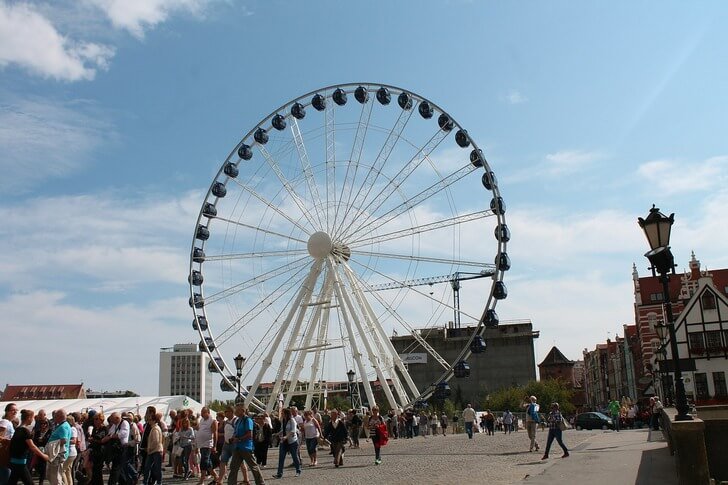
Address: Ferris wheel, Gdansk, Poland
Opening hours: 09:00 - 22:00
Jelitkovo beach
Despite the fact that the Baltic Sea cannot boast of warm water, there are still many who want to swim in its waves and sunbathe on the golden sand. In Gdansk, for these purposes, there is the city beach Jelitkovo, perfectly equipped for a relaxing holiday. There is a park, jogging and cycling paths, cafes (most are open only in the summer season) and entertainment areas for children.
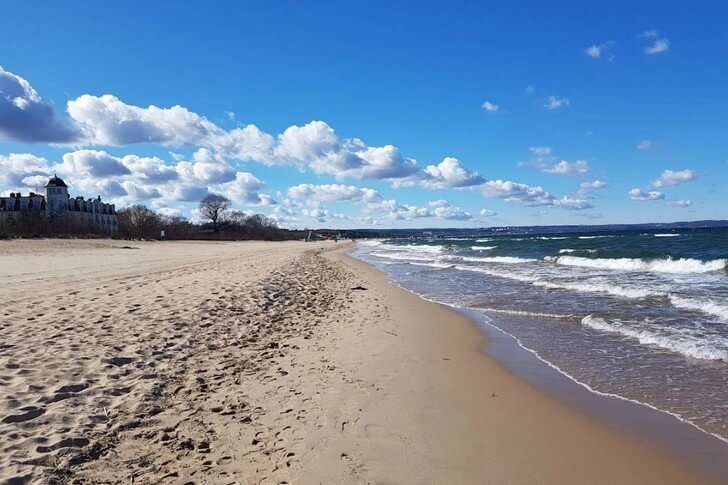
Address: Jelitkovo beach, Gdansk, Poland
Opening hours: 09:00 - 21:00